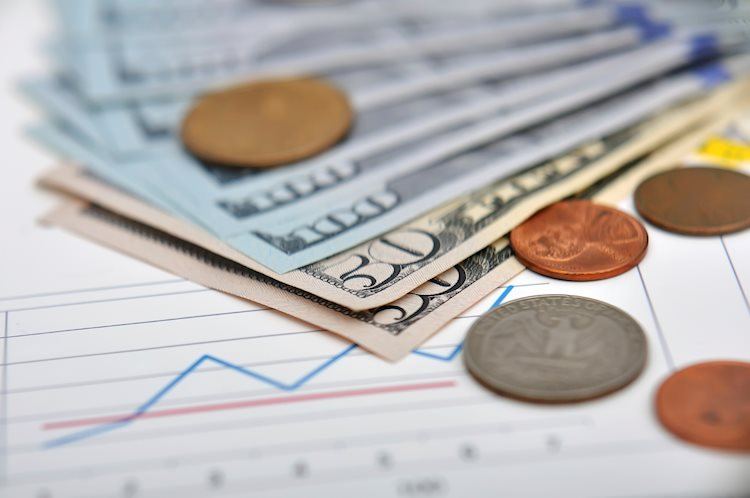- The US Dollar is set to book another week of gains.
- No focal data points on Friday, so expect tepid market movements.
- The US Dollar Index fails again to hold the 105.00 level, and could start to peak.
The US Dollar (USD) yet again the big winner this week as the divergence between Europe and the US labelled the Greenback as biggest winner in that equation. The path for the Greenback this Friday looks to be one of sideways to stronger against most major peers. The US economy is doing well and is on a trajectory for a soft landing, while economic activity in the Eurozone and Central Europe shows increasing signs of distress.
No real market moving data points on the calendar on Friday. Still, data about Wholesale Inventories for July will be released. The Baker Hughes US Rig Count data, to be published at the end of the trading day, could carry more weight than usual in the aftermath of the failed talks in Australia, which will likely lead to nearly 10% of the Natural Gas supply to be withdrawn in the coming weeks.
Daily digest: US Dollar already in weekend mode
- Traders will be on the lookout for any news from the G20 meeting in India taking place over the weekend. Aspecially the sudden move in Crude Prices by Saudi Arabia might be interesting to watch when meeting with US President Joe Biden.
- The main datapoint for this Friday is Wholesale Inventories data, which went from -0.1% previous to -0.2% for July. This adds to some profit taking in the US Dollar long positions this Friday at the end of the week.
- Baker Hughes US Oil Rig Count at 17:00 GMT will get a bit more attention as markets will look for clues over whether the US can supply itself with oil and natural gas now that 10% of global supply will be drawn from the markets as Australian LNG workers go on strikes.
- Equities in Asia are set to close this week in negative, with the last trading day also registering losses: The Japanese Topic Index closes down 1%. European equities are rather flat, though trading below zero as well.
- The CME Group FedWatch Tool shows that markets are pricing in a 93% chance that the Federal Reserve will keep interest rates unchanged at its meeting in September.
- The benchmark 10-year US Treasury bond yield trades at 4.23% and is off the peak from earlier this week. Markets have been able to digest a substantial amount of debt issuances, which was one of the elements that pushed yields higher.
US Dollar Index technical analysis: US next from here
The Greenback is back in favor and is rolling through the markets, weighing one equity and bond markets with lower bond prices and stocks dropping below several important support levels. The Greenback is extending its summer rally and could stay steady at stronger levels throughout the fall and winter if other central banks start cutting their benchmark interest rates. With the US Dollar remaining steady, depreciating currencies will push the US Dollar Index substantially higher and might see more Dollar strength to come.
All eyes stay on 105.00 after the DXY briefly broke the level on Wednesday and Thursday. Only a few cents to go and the DXY will be at a new six-month high once it is able to close there. The next levels are at 105.88, March’s high, which would make a new yearly high. If the index reaches this last level, some resistance might kick in.
On the downside, the 104.30 figure is vital to keep the US Dollar Index sustained at these elevated levels. Some room lower, the 200-day Simple Moving Average (SMA) at 103.04 comes into play, which could bring substantially more weakness once the DXY starts trading below it. The double belt of support at 102.68, with both the 100-day and the 55-day SMA, are the last lines of defence before the US Dollar sees substantial and longer-term depreciation.
Central banks FAQs
What does a central bank do?
Central Banks have a key mandate which is making sure that there is price stability in a country or region. Economies are constantly facing inflation or deflation when prices for certain goods and services are fluctuating. Constant rising prices for the same goods means inflation, constant lowered prices for the same goods means deflation. It is the task of the central bank to keep the demand in line by tweaking its policy rate. For the biggest central banks like the US Federal Reserve (Fed), the European Central Bank (ECB) or the Bank of England (BoE), the mandate is to keep inflation close to 2%.
What does a central bank do when inflation undershoots or overshoots its projected target?
A central bank has one important tool at its disposal to get inflation higher or lower, and that is by tweaking its benchmark policy rate, commonly known as interest rate. On pre-communicated moments, the central bank will issue a statement with its policy rate and provide additional reasoning on why it is either remaining or changing (cutting or hiking) it. Local banks will adjust their savings and lending rates accordingly, which in turn will make it either harder or easier for people to earn on their savings or for companies to take out loans and make investments in their businesses. When the central bank hikes interest rates substantially, this is called monetary tightening. When it is cutting its benchmark rate, it is called monetary easing.
Who decides on monetary policy and interest rates?
A central bank is often politically independent. Members of the central bank policy board are passing through a series of panels and hearings before being appointed to a policy board seat. Each member in that board often has a certain conviction on how the central bank should control inflation and the subsequent monetary policy. Members that want a very loose monetary policy, with low rates and cheap lending, to boost the economy substantially while being content to see inflation slightly above 2%, are called ‘doves’. Members that rather want to see higher rates to reward savings and want to keep a lit on inflation at all time are called ‘hawks’ and will not rest until inflation is at or just below 2%.
Is there a president or head of a central bank?
Normally, there is a chairman or president who leads each meeting, needs to create a consensus between the hawks or doves and has his or her final say when it would come down to a vote split to avoid a 50-50 tie on whether the current policy should be adjusted. The chairman will deliver speeches which often can be followed live, where the current monetary stance and outlook is being communicated. A central bank will try to push forward its monetary policy without triggering violent swings in rates, equities, or its currency. All members of the central bank will channel their stance toward the markets in advance of a policy meeting event. A few days before a policy meeting takes place until the new policy has been communicated, members are forbidden to talk publicly. This is called the blackout period.
Information on these pages contains forward-looking statements that involve risks and uncertainties. Markets and instruments profiled on this page are for informational purposes only and should not in any way come across as a recommendation to buy or sell in these assets. You should do your own thorough research before making any investment decisions. FXStreet does not in any way guarantee that this information is free from mistakes, errors, or material misstatements. It also does not guarantee that this information is of a timely nature. Investing in Open Markets involves a great deal of risk, including the loss of all or a portion of your investment, as well as emotional distress. All risks, losses and costs associated with investing, including total loss of principal, are your responsibility. The views and opinions expressed in this article are those of the authors and do not necessarily reflect the official policy or position of FXStreet nor its advertisers. The author will not be held responsible for information that is found at the end of links posted on this page.
If not otherwise explicitly mentioned in the body of the article, at the time of writing, the author has no position in any stock mentioned in this article and no business relationship with any company mentioned. The author has not received compensation for writing this article, other than from FXStreet.
FXStreet and the author do not provide personalized recommendations. The author makes no representations as to the accuracy, completeness, or suitability of this information. FXStreet and the author will not be liable for any errors, omissions or any losses, injuries or damages arising from this information and its display or use. Errors and omissions excepted.
The author and FXStreet are not registered investment advisors and nothing in this article is intended to be investment advice.




